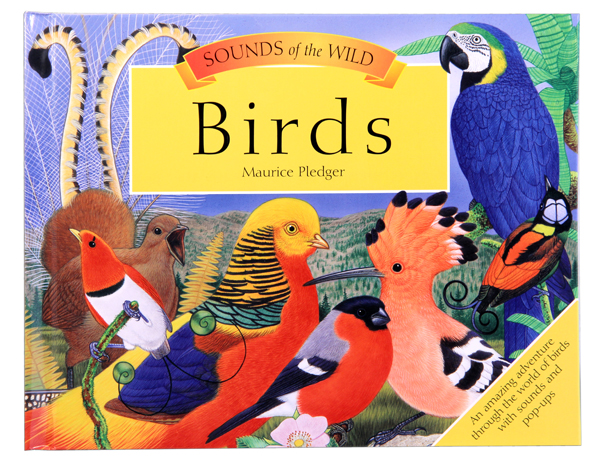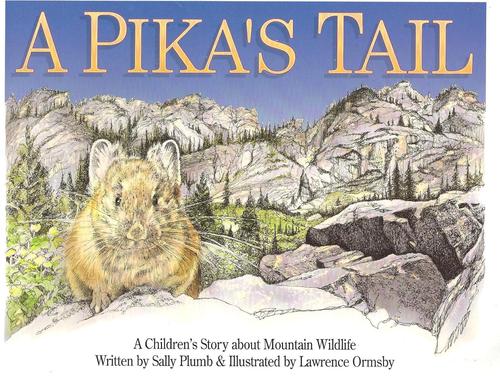In a word where Disney offers us flying elephants and talking crickets, I aim to introduce my son to nature without the personification — to show him that nature has humor, beauty, weirdness, consequences and (importantly, for my little boy) superheroes of its own, and on its own terms.
What books might engage a child from infancy through preschool years to be interested in the natural world? For me it’s meant picture books, beginning with very few words, and leading up to more complex books as my son grows older.

Here are seven books with beautiful and accurate illustrations that depict nature as it really is, albeit in gentle terms. Most, but not all, of the books feature animals, as children readily respond to animals.
They're listed in order of age recommendation, though many are truly engaging for all of the early years.
By Kevin Henkes, illustrated by Laura Dronzek
This classic was given to us by a specialist in children's literature. I began reading this book to my son at age 6 months.
While it does not identify birds by name, it shows birds in their many varieties of color, size and behavior, and it asks the reader simple questions such as "where do birds go at night?" The illustrations offer simple learning while reading — color identification, size difference, peekaboo, and so on.
In its subtle way, the book also brings birds into everyday life, and reminds us of how birds touch our lives, if we are paying attention.
By Janice Udry, Illustrated by Marc Simont
This book stands the test of time (except for the making of a bonfire out of gathered leaves — nowadays that might bring the fire department!).
The spare narrative and loose illustrations are evocative of cool autumn afternoons raking leaves, warm spring evenings walking along a forest trail of cottonwoods, and a hot summer afternoon napping beneath a maple tree.
Trees come alive as beautiful facets of the landscape, and versatile subjects in the pleasures we derive from them — none of it involving cutting them down.
The title of the book aptly gives away the message inside, that trees are nice. And they are.
By Eric Carle
Eric Carle is a thoughtful author-illustrator whose books always suggest more than the surface title. This book is based on the true story of a cargo ship that lost a container of toy rubber ducks overboard. The ducks floated (and may be still be) all over the world’s oceans.
The book is not an overt nature book, but it has a a powerful message about trash on the ocean surface, and how quickly it disperses and then lingers for years.
You can read this book at its face value as a counting book, but it is also an effective education tool to introduce your preschooler to the importance of keeping our oceans clean.
>Next: What Do You Do With a Tail Like This?
 What Do You Do With a Tail Like This?
What Do You Do With a Tail Like This?
By Steve Jenkins and Robin Page
Here is another book which has been a hit in our house. The book describes and shows in illustration how various animals have developed specialized tails, noses, feet, ears, etc., for a specific purpose. The illustrations are imaginative and intricate paper-cut collage, creating a tactile look reminiscent of animal skin, fur or feathers.
I began reading this to my son before he could speak, and once he could talk, he began to successfully identify each animal.
What's engaging about this book is how it shows kids animals' specialized adaptations,as if these animals were the superheroes of their kingdom.
>Next: Sounds of the Wild: Birds
By Maurice Pledger
As a lifelong birder, I have a bias for books about birds. This book, which features mostly birds of Europe and the old world, is a pop-up with accompanying audio for various habitats, such as countryside, wetland, desert, montane, and rainforest.
The audio is a dramatic addition to the pop-up, and a child can listen to the distinct bird song in each recording.
Each habitat depicted features an additional information page, where you can read more about each bird shown.
I recommend this book for the multi-sensory introduction it gives kids to the birding experience. Nothing beats the thrill of being in the field with birds all around them later in life, but this book is a great armchair facsimile.
By Taro Gomi
I originally bought this book as part of my son’s potty training, but right away appreciated how it completely demystifies the subject of defecating.
Yes, animals poop, too! The book covers varied living things from bug to whale in a colorful and playful way.
It doesn’t romanticize pooping or depict it without ever showing the actual product. The author offers up all shapes and sizes of poop, from all variety of animal rear ends.
Children love potty humor, and since I can’t avoid it, I love that this book is a covert teaching tool for appreciating nature in all its stinky ways.
By Sally Plumb, Illustrated by Lawrence Ormsby
The pika is a common sight when hiking at higher elevations in the Northwest's Cascade Mountains, and they are completely fearless, one of those “instant-gratification” creatures that is easy to spot and has a pleasing appearance.
I bought this book before I even had a child, knowing that when I did and he was old enough, I would take him hiking to see a pika.
I planned to use this book as enticement for more vigorous, higher-up walks, and sure enough, my son loves this book and its promise of drama in the mountains.
But not too much drama. Remember this is the preschool set, and the introduction of the predator/prey relationship can be taken in small steps.
This book covers the subject without demonizing any of the animal characters, and the end is a satisfying and believable conclusion of escape.
Read next
In Your Backyard: Urban birding for Kids
Wordless books for preschoolers
A month of get-outdoor activities
















